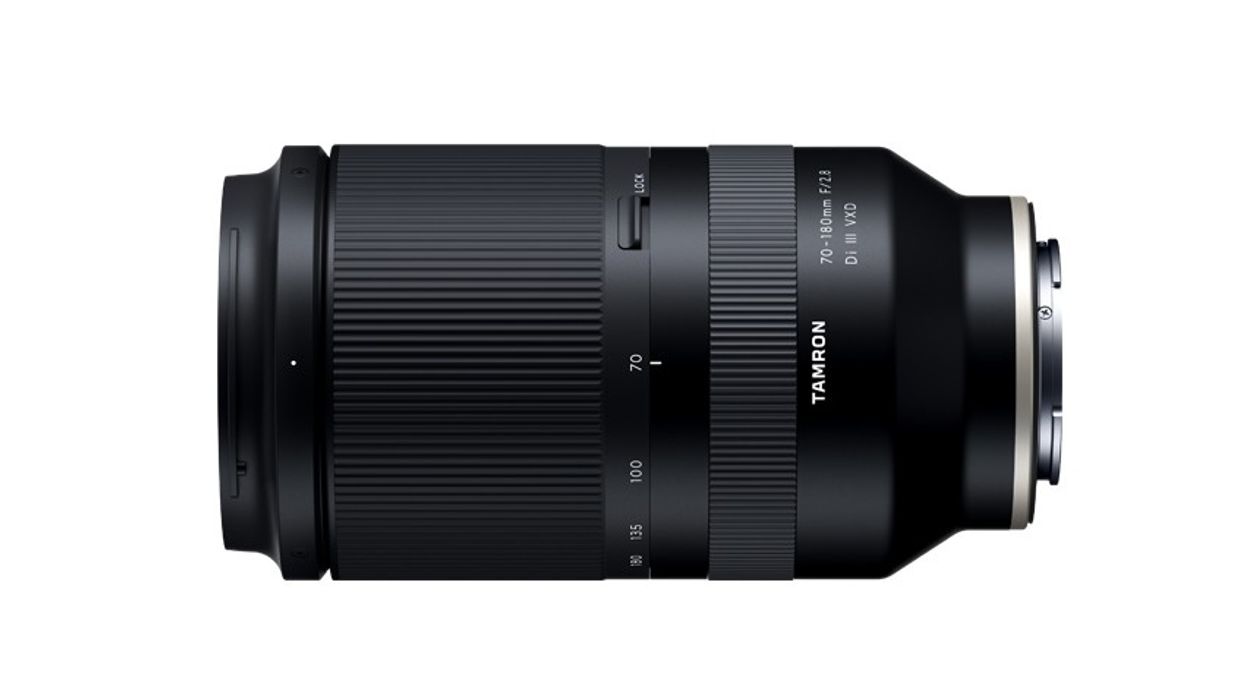Tamron's 70-180mm Lens Creates a Trio of Zooms for Sony E-Mount
The latest Tamron telephoto lens is light, fast, and budget-friendly.

Tamron revealed it was developing the 70-180mm F2.8 and 3 primes last October for the Sony E-mount full-frame cameras. Now, we know the price and availability of the 70-180mm F2.8 Di III VXD.
The lens is constructed from 19 elements in 14 groups, including XLD (eXtra Low Dispersion), LD (Low Dispersion), GM (Glass Molded Aspherical) and hybrid aspherical lens elements. It's also coated with BBAR-G2 (Broad-Band Anti-Reflection Generation 2) to suppress ghosting and flare.
It's light and compact, measuring 5.9" (149mm) long with a diameter of 3.2" (81mm) while weighing 810g.
The F2.8 aperture is consistent throughout the zoom range and features a 67mm front diameter. It joins the 17-28mm F2.8 Di III RXD and 28-75mm F2.8 Di III RXD, covering a range of 17-180mm across the 3 lenses. Tamron now has 6 focal lengths for E-mount.
Tamron E-mount lenses
Zooms
- 17-28mm F2.8 Di III RXD (internal zoom)
- 28-75mm F2.8 Di III RXD (barrel extends)
- 70-180mm F2.8 Di III VXD (barrel extends)
Primes
- 20mm F2.8 Di III OSD M1:2
- 24mm F2.8 Di III OSD M1:2
- 35mm F2.8 Di III OSD M1:2
You might have noticed the "VXD" in the 70-180mm F2.8 name. It refers to Tamron's VXD (Voice-coil eXtreme-torque Drive) linear autofocus motor. The RXD lenses use a stepping motor for the autofocus system. Tamron says both autofocus systems are fully compatible with camera-specific features including Fast Hybrid AF and Eye AF, along with in-camera lens correction and Direct Manual Focus (DMF).
In manual focus, the 70-180mm F2.8 has a minimum focusing distance of 10.6" (27cm) at 70mm. The aperture is a 9-blade design, so it will produce twice as many rays. Quick tip: the number of the aperture denotes the number of rays. If it's an even number, it will produce the same number of rays, if odd, it will produce double. 8-blade design, 8 rays. 7-blade design, 14 rays.
Tamron lenses do not share a consistency across all zooms models. It's something video shooters will have to keep in mind when working with matte boxes. This is true for other Tamron mounts like Canon or Nikon. The 70-210mm F4 Di VC USD touts internal zoom, while the 100-400mm F4.5-6.3 Di VC USD doesn't.
However, with Tamron E-mount lenses, the zoom ring does turn in the same direction as Sony's zoom lenses. To increase the focal length, the lens is rotated clockwise, which is the same as Nikon and the opposite of Canon.
Price & Availability
The lens will be available in the U.S. by May 14 for $1,199. However, with COVID-19, the release date could affect the supply chain. Have you used Tamron lenses for Sony E-mount? What are your thoughts? Let us know below.













